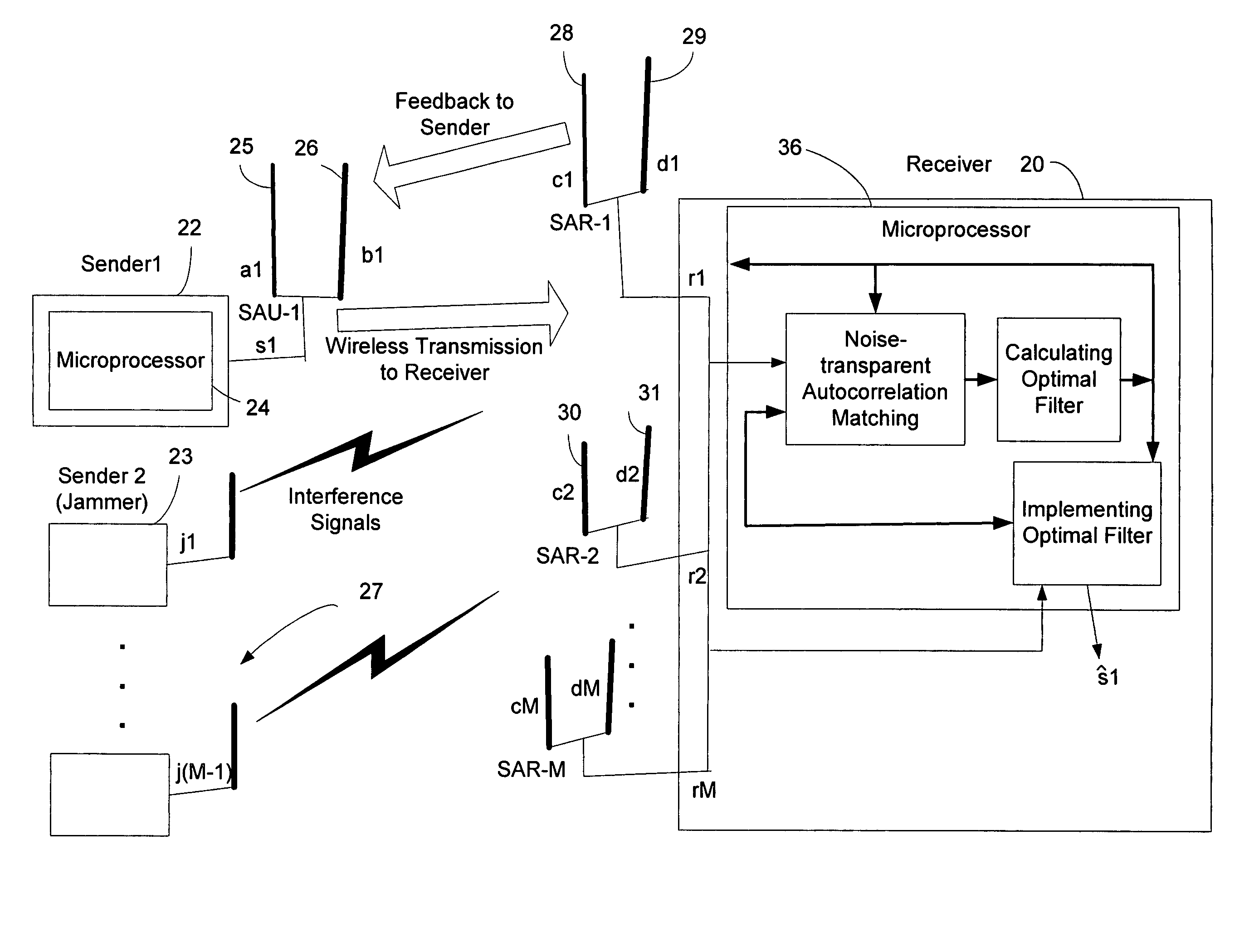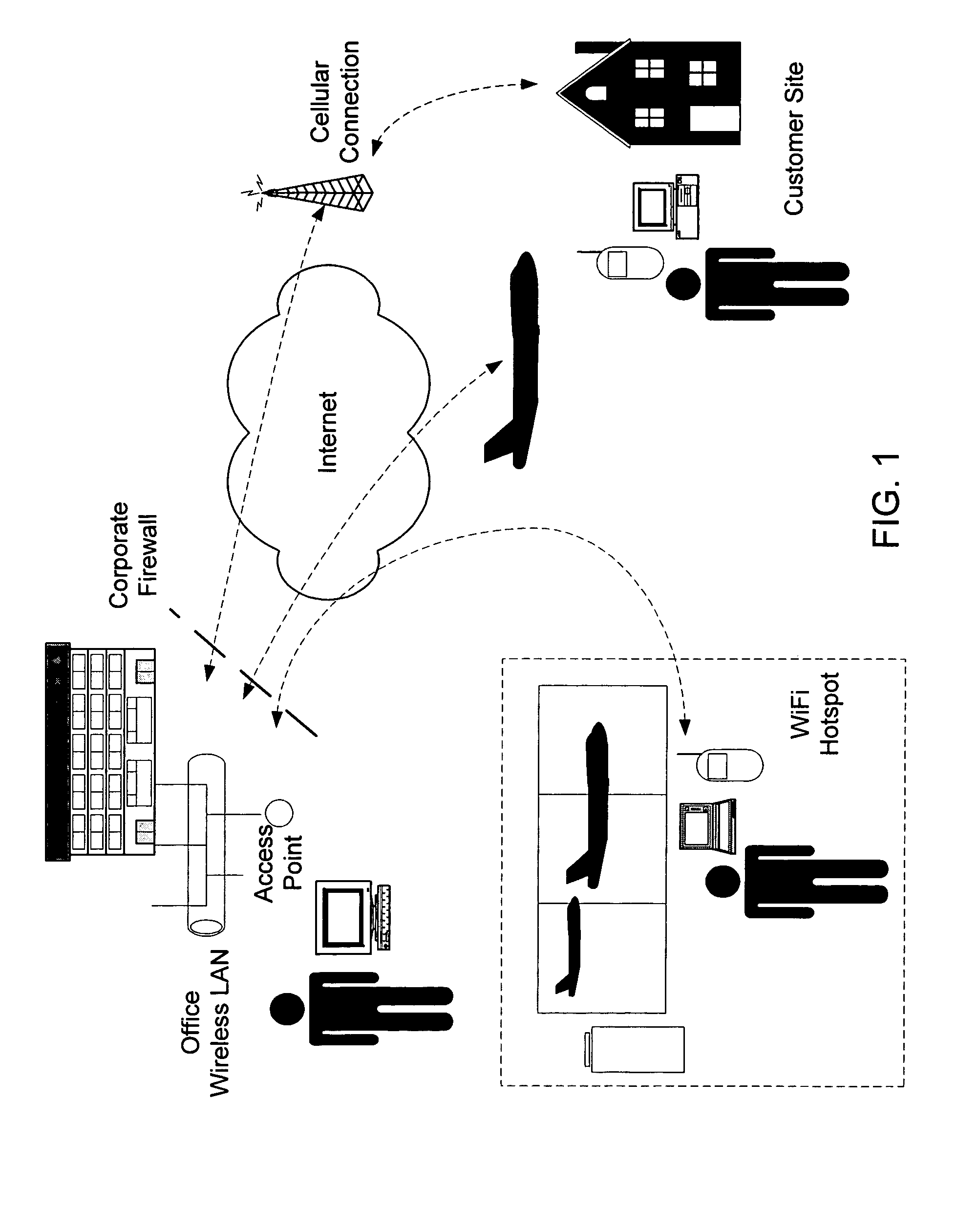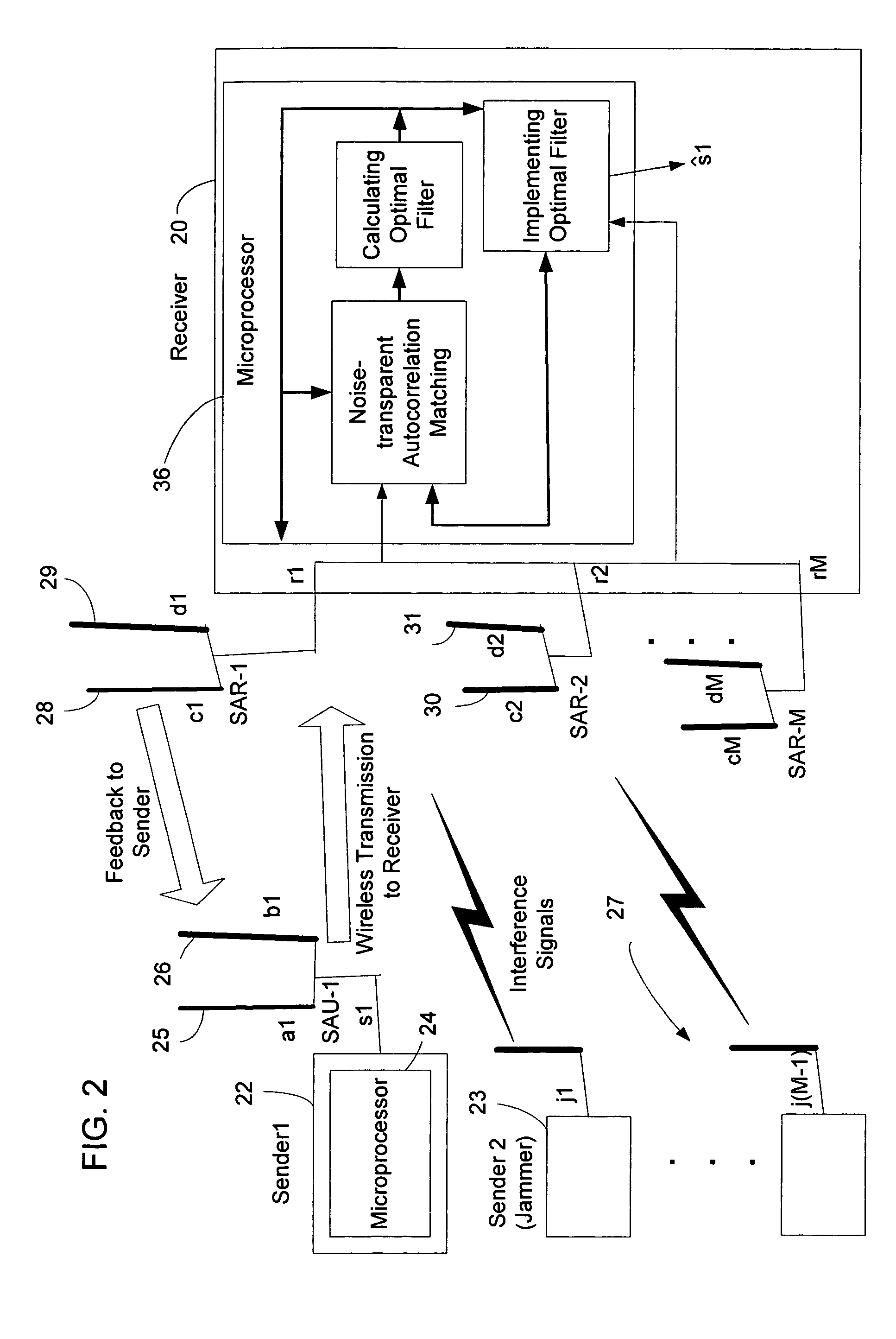Method and system for wireless communications using anti-interference to increase channel capacity
a wireless communication and channel capacity technology, applied in the field of wireless communication, can solve the problems of significant reduction of the effective channel capacity of the wireless transmission from the sender to the receiver, the presence of interference signals transmitted by devices, and the limited area of the cell it controls, so as to achieve effective blocking of interference, improve channel capacity, and improve the effect of channel capacity
- Summary
- Abstract
- Description
- Claims
- Application Information
AI Technical Summary
Benefits of technology
Problems solved by technology
Method used
Image
Examples
Embodiment Construction
[0021] Referring to FIG. 2, the present invention provides a method and system to effectively block unwanted signals that interfere with the wireless communications between a sender and a receiver. As a result, a significant enhancement in the channel capacity for the wireless communications is achieved, and in a case using a feedback approach of the invention as described in detail below the channel capacity may exceed the limit set by the well-known Shannon channel capacity in the presence of interferences. As illustrated in the embodiment of FIG. 2, a first sender 22 sends a wireless signal s1 through a sending device that can be an antenna or a smart antenna unit SAU-1 as shown which includes two antennas 25 and 26 with adjustable weights a1 and b1 respectively. A second sender 23 sends another wireless signal j1 through its antenna. In this example, the first sender 22 is the intended sender that the receiver 20 wants to communicate with. Since the wireless signal j1 uses the s...
PUM
 Login to View More
Login to View More Abstract
Description
Claims
Application Information
 Login to View More
Login to View More - Generate Ideas
- Intellectual Property
- Life Sciences
- Materials
- Tech Scout
- Unparalleled Data Quality
- Higher Quality Content
- 60% Fewer Hallucinations
Browse by: Latest US Patents, China's latest patents, Technical Efficacy Thesaurus, Application Domain, Technology Topic, Popular Technical Reports.
© 2025 PatSnap. All rights reserved.Legal|Privacy policy|Modern Slavery Act Transparency Statement|Sitemap|About US| Contact US: help@patsnap.com



